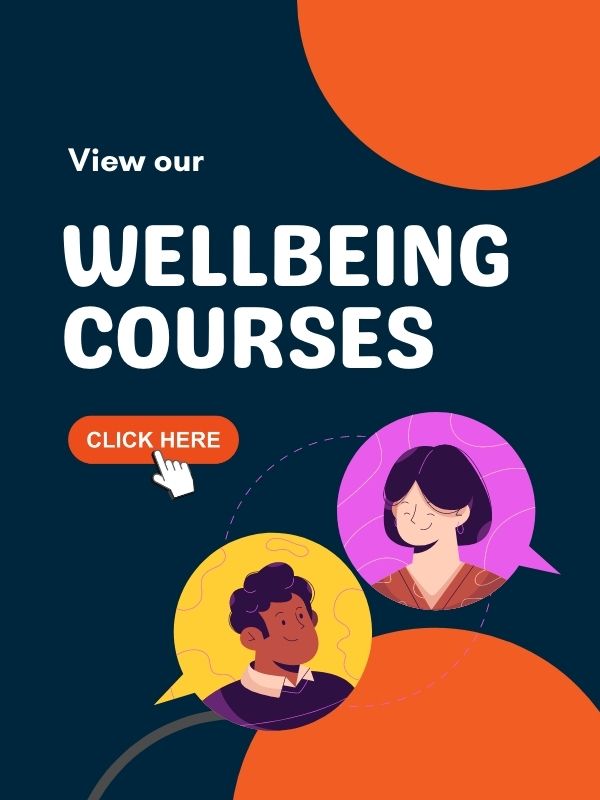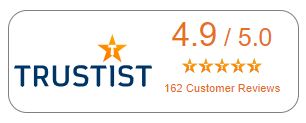Employers: What do you need in your Mental Health First Aid Kit?
Mental health Issues affect 1 in 4 people a year. So, even if you don’t have a mental health issue it’s likely a friend, family member or work colleague will be affected
The impact of Covid-19 on mental health should not be underestimated. 1 in 3 households have lost income due to Covid-19 and there are strong links between unemployment, economic deprivation and suicide. For those with existing mental health conditions, it has become even harder to access support during the pandemic.
But, many people can and do recover from mental health issues. Alongside professional help, the support of friends, family and getting back to work are all important in helping people recover.

Why should employers make mental health support a priority at work?
Many employers assume that most mental health issues start at home, so some employers feel that it is not their place, or even responsibility, to intervene and provide support.
However, the mental health issues people face originate from many different sources – both work and non-work related. In fact, according to CIPD’s 2016 survey, 54% of people reporting poor mental health said that this was due to a combination of work and non-work issues.
Mental health shouldn’t be swept under the carpet, it’s an issue for everyone. Most people are affected in some way and a positive approach from employers goes a long way to boost staff morale, productivity and loyalty.
-
Understanding Mental Health
The first tool in your mental health first aid kit is UNDERSTANDING.
There are huge misconceptions and stigmas that surround mental health issues. So, breaking these down and building a clearer picture will help you address the issues in an appropriate and healthy way.
Just like physical health, mental health can fluctuate and poor mental health can affect anyone, any age, personality or background.
Keeping this in mind, let’s take a look at the Mental Health Continuum.

The Mental Health Continuum describes a scale of mental health and wellbeing. Depending on internal and external factors, individuals may find themselves at a particular point on the scale. This position can shift as their situation deteriorates or improves.
Employers can make an impact on this continuum by creating a workplace culture that values mental health. A culture that breaks down negative stigma and introduces an inclusive educational approach can help keep individuals in the “Healthy” stage and provide support for those who have slipped into the “Reacting” stage.
This pro-active style culture can also help identify those who have moved into the extreme ends of the continuum “Injured” and “Ill” by recognising the symptoms and signposting to appropriate professional care (we’ll touch more on this next.)
-
Identifying the Signs and Signposting
The second tool in our kit is IDENTIFYING.
Managers and employers should remain alert to and be able to identify symptoms of distress in the workplace. Have a look below to see how some symptoms may appear:

Being able to recognise these triggers means employers are better positioned to identify those potentially at risk from poor mental health. But, after identifying the signs, what should you do next?
A key part of supporting staff with mental health issues is recognising when more specialised advice and services are needed.
This is called signposting. Employers and managers should be aware of a range of national and local services available to support those with mental health issues. Consider external sign-posting to an organisation such as:
- Debt Advice Agencies such as StepChange, Citizens Advice, Christians against Poverty
- NHS 111 (dial 111) for more help with a health problem
- Ask if they have spoken with their own Doctor or Mental Health Professional
- Samaritans (dial 116 123) for suicidal or despairing people
- PAPYRUS - https://www.papyrus-uk.org/
- HUB of Hope - https://hubofhope.co.uk/
- If there is a risk of immediate harm dial 999
-
Initiating Healthy Conversations
Our third tool is INITIATING.
Initiating a conversation about mental health can sometimes seem sensitive and daunting. But, approaching conversations in a healthy and pro-active manner will encourage others to have the confidence to speak up.
Healthy conversations take place in confidential and non-confrontational settings. These conversations shouldn’t be big interventions that provoke increased feelings of anxiety for the employee.
Questions should be simple, open and non-judgemental to allow the employee to explain their situation in their own words. A good starting point is asking how are they, are they struggling with their workload, are they worrying about anything at work or home, do they feel they are sufficiently support at work?
Here’s a useful conversation checklist:

-
Managing Stress at Work
The fourth tool in our kit is MANAGING.
Managing stress effectively is a proactive way to support mental health in the workplace and to help prevent people from sliding across the Mental Health Continuum.
Employers need to develop an organisational framework to manage the risks associated with stress at work. Some level of stress is normal but frequently becoming overwhelmed by stress can lead to larger problems.
Good managers are able to spot early signs of distress and intervene to provide practical solutions for those involved. There are plenty of ways managers can make a difference:
- Create realistic deadlines.
- Clearly communicate task objectives.
- Deal with problems as soon as they arise.
- Give employees the appropriate level of job responsibility.
- Encourage participation from the whole team.
- Regularly check-in with team members.
- Act as a mediator in a conflict situation.
-
Training
The last tool in our kit is TRAINING.
Ensuring that employers, managers and staff have the skills to identify and support those with mental health issues is vital to a positive and productive workplace.
You can help protect your employees by providing staff and managers with a greater understanding of mental health. And equip your organisation with the skills to effectively respond to mental health issues, which in turn will help you better cope during challenging times.
We all need support with our Mental Health and Wellbeing at times. Being pro-active with how we approach these issues with training can help us manage difficult times in the future.
Check out these Mental Health and Wellbeing Courses which can better enable you to support yourself, colleagues, staff and those around you going through challenging situations.


